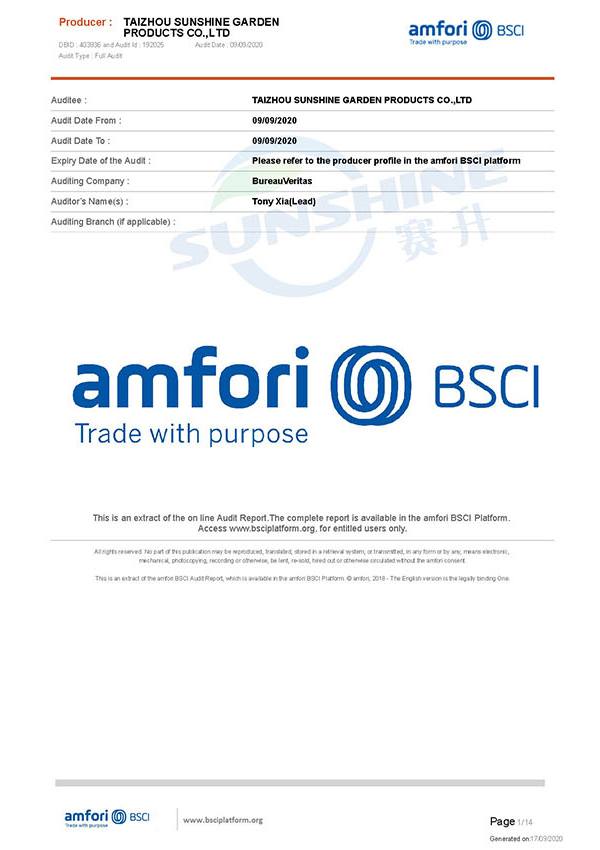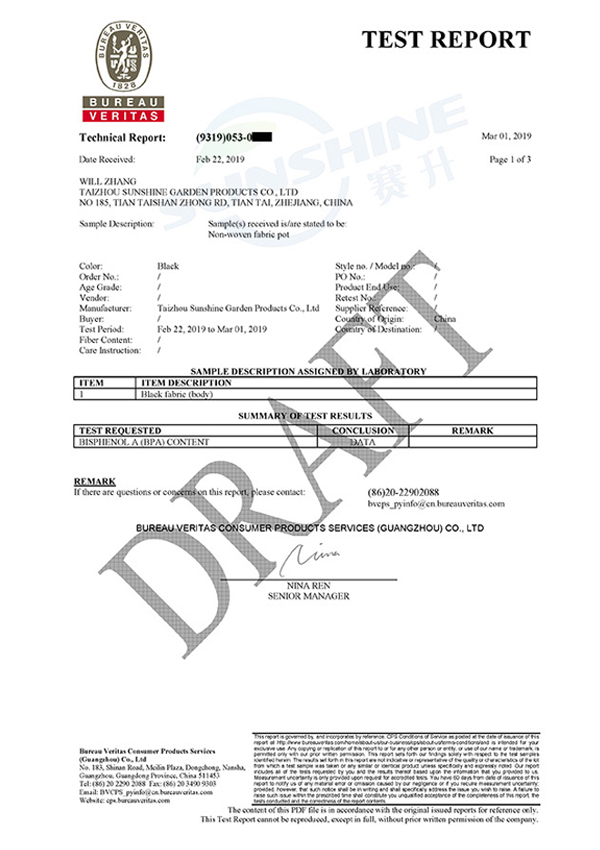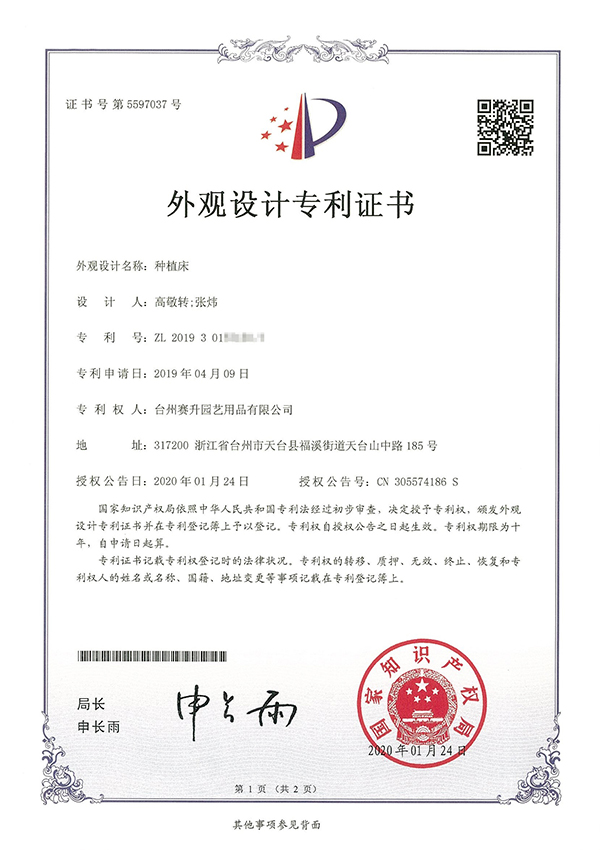
|
Item Name
|
Plant Grow Tent
|
|
Brand
|
Sunshine Garden (OEM available)
|
|
Fabric Material
|
210D/600D/1280D/1680D Reflective Mylar + Oxfrod Cloth
|
|
Frame Material
|
Steel Frame, Plastic Connector
|
|
Size (cm)
|
120x120x200 (Customizable)
|
|
Size (inch)
|
48x48x78 (4x4ft) (Customizable)
|
|
Cover Color
|
Black (Customizable)
|
|
Frame Color
|
Green (Customizable)
|
|
Custom
|
Available (logo, material, size, color, etc.)
|




Offers everything you need to build complete gardening and hydroponic systems.
-1.jpg) Why Edge Height Matters in a Rolling Tray
The edge height of a Rolling Tray plays a surprisingly important role in how easily and efficiently users can organize materials such as loose tobacco, herbs, or rolling papers.
A well-designed edge prevents materials from spilling over the sides, reducing waste and keeping the workspace clean.
The height also affects hand movement: shallower edges support quick scooping and spreading, while deeper edges can restrict motion but increase containment.
Users who frequently multitask during preparation tend to prefer trays that keep materials securely inside without constant attention.
Because rolling habits vary widely, understanding how different edge heights influence workflow helps users select a tray that matches their usage style.
Benefits and Limitations of Low-Edge Trays
Low-edge trays are typically designed with an edge height of only a few millimeters to a centimeter.
These trays are ideal for fast, fluid rolling motions because the fingers can move across the surface without obstruction.
They excel in controlled indoor environments where airflow is stable, and the risk of materials blowing away is minimal.
Their minimal walls make them good for users who prioritize speed and tactile control over containment.
However, low edges may not provide adequate protection for beginners or for users working with finely ground materials that tend to scatter easily.
Advantages of Medium-Edge Trays for Everyday Use
Medium-edge trays strike a balance between mobility and containment, making them the versatile option for general rolling tasks.
Typically 1–2 centimeters in height, the edges prevent accidental loss of material while still allowing comfortable hand motions.
These trays work well in living rooms, lounges, or shared spaces where slight movements or airflow may disturb the materials.
The moderate walls also help users funnel leftover tobacco or herbs back into a storage container without spilling.
This edge height is preferred by users who want reliability without sacrificing the simplicity and speed of rolling.
High-Edge Trays for Containment
High-edge trays are designed with taller walls that provide good protection and organization during preparation.
They reduce the risk of spillage, especially for beginners or those working with fluffy blends that scatter easily.
These trays are ideal for outdoor use, including parks, patios, and windy environments where loose material can easily be lost.
The deeper edges help keep tools—such as filters, small containers, or rolling papers—in one place rather than sliding off the tray.
The trade-off is reduced hand freedom, making them slower to work with if speed is a priority.
Matching Edge Height to Specific Scenarios
Different situations require trays with different levels of containment, mobility, and accessibility.
Indoor, calm environments benefit from low to medium edges, as the preparation process is controlled and efficient.
Outdoor or mobile settings require medium to high edges to prevent scattering or loss.
Users with limited workspace may also prefer higher edges to keep all components compactly contained.
Those who value aesthetics or minimalist design may gravitate toward low-edge trays, while practicality-focused users often choose medium or high designs.
The edge height of a rolling surface has a direct influence on efficiency, movement, material retention, and overall ease of use. By understanding the strengths and limitations of each height category—low, medium, and high—users can select a tray that enhances their rolling experience in any environment.
Why Edge Height Matters in a Rolling Tray
The edge height of a Rolling Tray plays a surprisingly important role in how easily and efficiently users can organize materials such as loose tobacco, herbs, or rolling papers.
A well-designed edge prevents materials from spilling over the sides, reducing waste and keeping the workspace clean.
The height also affects hand movement: shallower edges support quick scooping and spreading, while deeper edges can restrict motion but increase containment.
Users who frequently multitask during preparation tend to prefer trays that keep materials securely inside without constant attention.
Because rolling habits vary widely, understanding how different edge heights influence workflow helps users select a tray that matches their usage style.
Benefits and Limitations of Low-Edge Trays
Low-edge trays are typically designed with an edge height of only a few millimeters to a centimeter.
These trays are ideal for fast, fluid rolling motions because the fingers can move across the surface without obstruction.
They excel in controlled indoor environments where airflow is stable, and the risk of materials blowing away is minimal.
Their minimal walls make them good for users who prioritize speed and tactile control over containment.
However, low edges may not provide adequate protection for beginners or for users working with finely ground materials that tend to scatter easily.
Advantages of Medium-Edge Trays for Everyday Use
Medium-edge trays strike a balance between mobility and containment, making them the versatile option for general rolling tasks.
Typically 1–2 centimeters in height, the edges prevent accidental loss of material while still allowing comfortable hand motions.
These trays work well in living rooms, lounges, or shared spaces where slight movements or airflow may disturb the materials.
The moderate walls also help users funnel leftover tobacco or herbs back into a storage container without spilling.
This edge height is preferred by users who want reliability without sacrificing the simplicity and speed of rolling.
High-Edge Trays for Containment
High-edge trays are designed with taller walls that provide good protection and organization during preparation.
They reduce the risk of spillage, especially for beginners or those working with fluffy blends that scatter easily.
These trays are ideal for outdoor use, including parks, patios, and windy environments where loose material can easily be lost.
The deeper edges help keep tools—such as filters, small containers, or rolling papers—in one place rather than sliding off the tray.
The trade-off is reduced hand freedom, making them slower to work with if speed is a priority.
Matching Edge Height to Specific Scenarios
Different situations require trays with different levels of containment, mobility, and accessibility.
Indoor, calm environments benefit from low to medium edges, as the preparation process is controlled and efficient.
Outdoor or mobile settings require medium to high edges to prevent scattering or loss.
Users with limited workspace may also prefer higher edges to keep all components compactly contained.
Those who value aesthetics or minimalist design may gravitate toward low-edge trays, while practicality-focused users often choose medium or high designs.
The edge height of a rolling surface has a direct influence on efficiency, movement, material retention, and overall ease of use. By understanding the strengths and limitations of each height category—low, medium, and high—users can select a tray that enhances their rolling experience in any environment.
.jpg) How Does Power Compatibility Influence CMH Sodium Light Performance?
Ensuring proper power compatibility is essential for the stable and safe performance of CMH Sodium Light systems. These lighting technologies rely on precise electrical conditions to maintain spectral accuracy and consistent intensity.
• The one key factor is matching the rated input voltage. CMH fixtures and ballasts are designed for specific voltage ranges, and deviations can result in ignition failure, flickering, or shortened ballast lifespan. Facilities with unstable electrical grids must use voltage regulators or stabilizers to prevent performance fluctuations.
• Frequency compatibility plays an equally important role. Ballasts designed for low-frequency operation behave differently from high-frequency digital ballasts. Using an incompatible ballast may cause acoustic resonance, overheating, or spectrum shifts that affect the uniformity of illumination.
• Power factor is another component of compatibility. High-power-factor ballasts reduce energy loss and reduce strain on the electrical distribution system. In setups involving dozens or hundreds of fixtures, improving the power factor enhances system efficiency and reduces heat buildup in wiring.
• Surge protection is crucial, especially in industrial or greenhouse environments where heavy machinery may introduce voltage spikes. High-quality ballasts incorporate surge suppression circuits that safeguard both the ballast and lamp.
What Role Does Ballast Design Play in Electrical Stability?
Ballasts are central to ensuring electrical stability in CMH lighting systems.
• Modern electronic ballasts provide controlled ignition pulses, ensuring reliable lamp startup even in varying temperature or humidity conditions. Poor-quality ballasts often fail to ignite the lamp consistently, causing downtime and maintenance issues.
• They regulate current flow throughout the operating cycle, preventing overcurrent conditions that can cause premature electrode degradation. Consistent current regulation also improves color stability and light output.
• Thermal management within the ballast is essential. Overheating can cause efficiency loss or complete failure. Well-designed ballasts include thermal cutoffs, temperature sensors, and heat-dissipating structures to maintain safe operating ranges.
• Some advanced ballasts feature active monitoring via microprocessors. These systems detect changes in voltage, current, and temperature, automatically adjusting output to maintain stable performance.
How Can Dimming Be Safely Implemented in CMH Systems?
Although dimming is beneficial for reducing energy consumption and optimizing light cycles, it must be handled carefully with CMH lamps.
• Not all CMH lamps are designed for dimming, so compatibility between the lamp and ballast must be confirmed. Using a dimmable ballast with a non-dimmable lamp can cause unstable arcs and reduced lifespan.
• Dimming range limits must be respected. Operating below a lamp’s wattage threshold prevents the salts inside the arc tube from fully vaporizing, causing flickering or color inconsistency.
• Smooth digital dimming is preferred. Abrupt changes in power input stress the lamp’s internal components. Advanced dimming ballasts adjust output gradually, ensuring stable transitions without damaging the arc tube.
• Temperature shifts related to dimming must be managed. Lower output levels decrease internal operating temperature, affecting vaporization rates. Intelligent ballasts compensate for these changes by adjusting current flow.
• Soft-start technology enhances dimming reliability. By gradually ramping up voltage during ignition, soft-start systems protect the electrodes and improve lamp longevity.
What Additional Design Measures Improve Reliability?
Optimizing system reliability requires addressing environmental and structural factors.
• Adequate fixture ventilation prevents overheating of both lamp and ballast. CMH systems generate significant heat, and insufficient airflow may compromise long-term stability.
• Electromagnetic interference shielding reduces the risk of disturbance from external devices. High-frequency ballasts may otherwise interfere with sensitive electronics.
• High-quality wiring and connectors ensure safe electrical transfer. Using heat-resistant cables reduces the risk of insulation degradation from prolonged operation.
• Routine maintenance—including cleaning dust from vents, checking connectors, and inspecting ballasts—helps preserve stable performance over time.
How Does Power Compatibility Influence CMH Sodium Light Performance?
Ensuring proper power compatibility is essential for the stable and safe performance of CMH Sodium Light systems. These lighting technologies rely on precise electrical conditions to maintain spectral accuracy and consistent intensity.
• The one key factor is matching the rated input voltage. CMH fixtures and ballasts are designed for specific voltage ranges, and deviations can result in ignition failure, flickering, or shortened ballast lifespan. Facilities with unstable electrical grids must use voltage regulators or stabilizers to prevent performance fluctuations.
• Frequency compatibility plays an equally important role. Ballasts designed for low-frequency operation behave differently from high-frequency digital ballasts. Using an incompatible ballast may cause acoustic resonance, overheating, or spectrum shifts that affect the uniformity of illumination.
• Power factor is another component of compatibility. High-power-factor ballasts reduce energy loss and reduce strain on the electrical distribution system. In setups involving dozens or hundreds of fixtures, improving the power factor enhances system efficiency and reduces heat buildup in wiring.
• Surge protection is crucial, especially in industrial or greenhouse environments where heavy machinery may introduce voltage spikes. High-quality ballasts incorporate surge suppression circuits that safeguard both the ballast and lamp.
What Role Does Ballast Design Play in Electrical Stability?
Ballasts are central to ensuring electrical stability in CMH lighting systems.
• Modern electronic ballasts provide controlled ignition pulses, ensuring reliable lamp startup even in varying temperature or humidity conditions. Poor-quality ballasts often fail to ignite the lamp consistently, causing downtime and maintenance issues.
• They regulate current flow throughout the operating cycle, preventing overcurrent conditions that can cause premature electrode degradation. Consistent current regulation also improves color stability and light output.
• Thermal management within the ballast is essential. Overheating can cause efficiency loss or complete failure. Well-designed ballasts include thermal cutoffs, temperature sensors, and heat-dissipating structures to maintain safe operating ranges.
• Some advanced ballasts feature active monitoring via microprocessors. These systems detect changes in voltage, current, and temperature, automatically adjusting output to maintain stable performance.
How Can Dimming Be Safely Implemented in CMH Systems?
Although dimming is beneficial for reducing energy consumption and optimizing light cycles, it must be handled carefully with CMH lamps.
• Not all CMH lamps are designed for dimming, so compatibility between the lamp and ballast must be confirmed. Using a dimmable ballast with a non-dimmable lamp can cause unstable arcs and reduced lifespan.
• Dimming range limits must be respected. Operating below a lamp’s wattage threshold prevents the salts inside the arc tube from fully vaporizing, causing flickering or color inconsistency.
• Smooth digital dimming is preferred. Abrupt changes in power input stress the lamp’s internal components. Advanced dimming ballasts adjust output gradually, ensuring stable transitions without damaging the arc tube.
• Temperature shifts related to dimming must be managed. Lower output levels decrease internal operating temperature, affecting vaporization rates. Intelligent ballasts compensate for these changes by adjusting current flow.
• Soft-start technology enhances dimming reliability. By gradually ramping up voltage during ignition, soft-start systems protect the electrodes and improve lamp longevity.
What Additional Design Measures Improve Reliability?
Optimizing system reliability requires addressing environmental and structural factors.
• Adequate fixture ventilation prevents overheating of both lamp and ballast. CMH systems generate significant heat, and insufficient airflow may compromise long-term stability.
• Electromagnetic interference shielding reduces the risk of disturbance from external devices. High-frequency ballasts may otherwise interfere with sensitive electronics.
• High-quality wiring and connectors ensure safe electrical transfer. Using heat-resistant cables reduces the risk of insulation degradation from prolonged operation.
• Routine maintenance—including cleaning dust from vents, checking connectors, and inspecting ballasts—helps preserve stable performance over time.
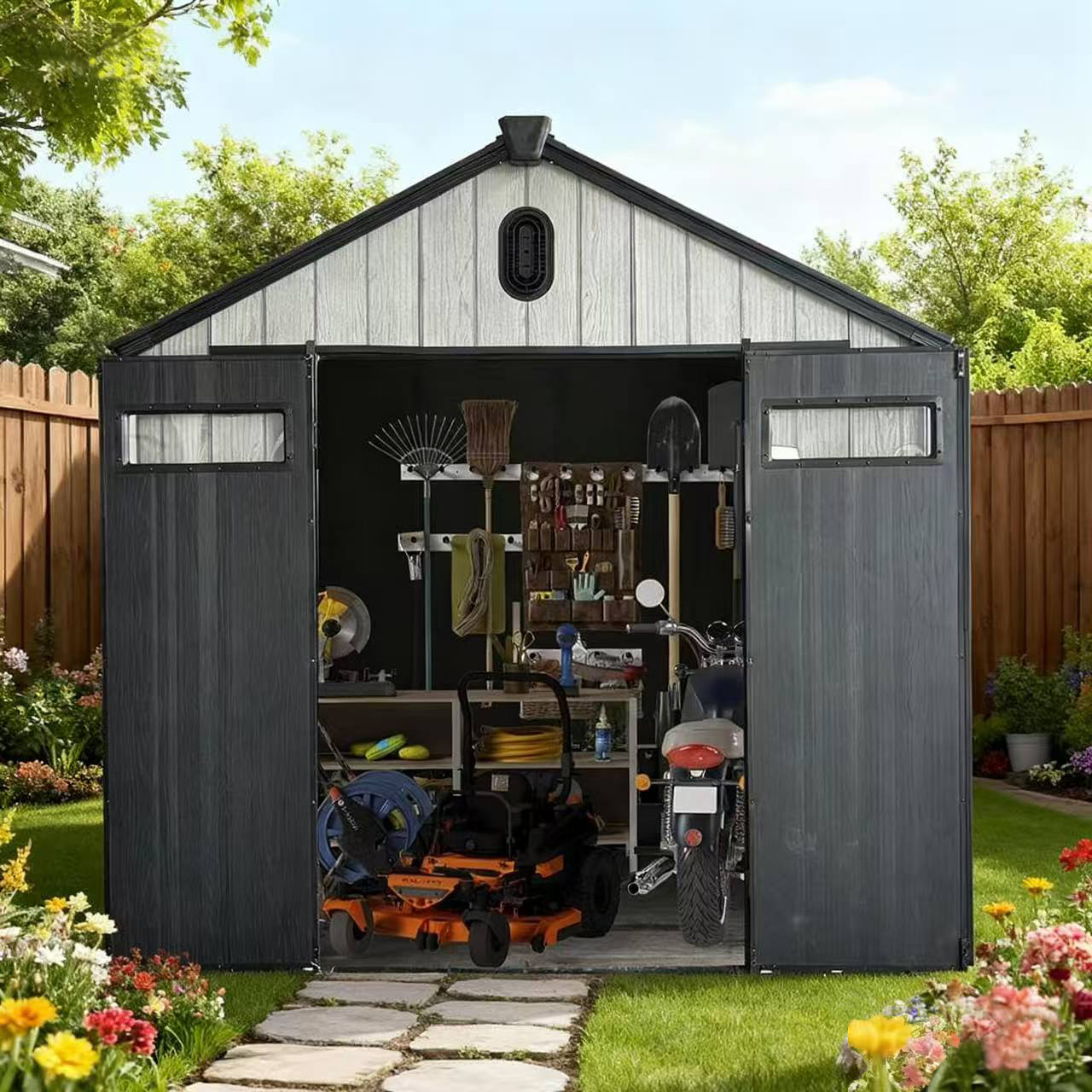 The resin tool shed is an outdoor storage structure made of high-strength resin materials (usually polyethylene or polypropylene), mainly used for storing gardening tools, power tools, outdoor equipment, etc. Here are its advantages:
Key Advantages
1. Extremely Low Maintenance:
No Rotting, Rusting, or Corroding: Unlike wood or metal, resin is impervious to water, insects, and rust.
No Painting or Staining Required: The color is molded throughout the material, so it won't peel or fade significantly.
2. Durability & Weather Resistance:
Waterproof: Seamless design and tight fittings keep rain and snow out effectively.
UV-Resistant: High-quality resins are treated to withstand sun exposure without significant brittleness or color loss.
Won't Dent: Unlike metal, it resists dents from impacts.
3. Lightweight & Easy Assembly:
Panels are much lighter than wood or metal, making them easier to handle.
They feature a modular, interlocking design (like a large puzzle) that typically requires only basic tools (screwdriver, mallet) for assembly.
4. Security & Stability:
Most models include a sturdy floor and anchor points to secure the shed to a base (like a concrete slab or wooden platform) for wind resistance.
Pre-drilled holes for padlocks on doors provide basic security for valuable tools.
5. Aesthetic and Practical Design:
Clean Look: Often designed to resemble wood paneling but without the upkeep. Available in various colors (green, grey, beige) to blend into garden settings.
Integrated Features: Many include built-in ventilation, skylights, sturdy shelving brackets, and wide double doors for easy access.
Important Considerations (Potential Drawbacks)
Weight Capacity/Limit: Not designed for extremely heavy industrial machinery. Check the manufacturer's weight specifications.
Extreme Heat: In very hot climates, poorly ventilated resin sheds can get quite warm inside.
Aesthetic: While neat, some prefer the natural look of a wooden shed over plastic.
Foundation is Crucial: This is the very critical step. A resin shed must be installed on a perfectly level, solid, and raised base (e.g., gravel, paving slabs, or a wooden frame) to prevent warping and ensure structural integrity.
The resin tool shed is an outdoor storage structure made of high-strength resin materials (usually polyethylene or polypropylene), mainly used for storing gardening tools, power tools, outdoor equipment, etc. Here are its advantages:
Key Advantages
1. Extremely Low Maintenance:
No Rotting, Rusting, or Corroding: Unlike wood or metal, resin is impervious to water, insects, and rust.
No Painting or Staining Required: The color is molded throughout the material, so it won't peel or fade significantly.
2. Durability & Weather Resistance:
Waterproof: Seamless design and tight fittings keep rain and snow out effectively.
UV-Resistant: High-quality resins are treated to withstand sun exposure without significant brittleness or color loss.
Won't Dent: Unlike metal, it resists dents from impacts.
3. Lightweight & Easy Assembly:
Panels are much lighter than wood or metal, making them easier to handle.
They feature a modular, interlocking design (like a large puzzle) that typically requires only basic tools (screwdriver, mallet) for assembly.
4. Security & Stability:
Most models include a sturdy floor and anchor points to secure the shed to a base (like a concrete slab or wooden platform) for wind resistance.
Pre-drilled holes for padlocks on doors provide basic security for valuable tools.
5. Aesthetic and Practical Design:
Clean Look: Often designed to resemble wood paneling but without the upkeep. Available in various colors (green, grey, beige) to blend into garden settings.
Integrated Features: Many include built-in ventilation, skylights, sturdy shelving brackets, and wide double doors for easy access.
Important Considerations (Potential Drawbacks)
Weight Capacity/Limit: Not designed for extremely heavy industrial machinery. Check the manufacturer's weight specifications.
Extreme Heat: In very hot climates, poorly ventilated resin sheds can get quite warm inside.
Aesthetic: While neat, some prefer the natural look of a wooden shed over plastic.
Foundation is Crucial: This is the very critical step. A resin shed must be installed on a perfectly level, solid, and raised base (e.g., gravel, paving slabs, or a wooden frame) to prevent warping and ensure structural integrity.
.png) How Does CMH Sodium Light Influence Overall Illumination Uniformity?
The use of CMH Sodium Light in horticulture and commercial lighting systems has become increasingly common due to its ability to deliver a balanced spectrum and strong radiant output. One of the relevant performance aspects is illumination uniformity—how evenly the light spreads over a designated area. Uniformity plays a major role in plant growth, visual comfort, and energy efficiency.
• CMH-based sources typically produce a wider and more consistent beam pattern compared with traditional sodium lamps. Their arc tube design and optimized reflector compatibility help reduce hot spots and shadowed regions.
• The broad-spectrum output improves the perceived and functional uniformity of light because wavelengths are more evenly distributed across the target surface. This makes them particularly favorable for grow rooms, retail areas, or warehouse settings that require predictable coverage.
• Fixture geometry also contributes significantly. When paired with deep reflectors, these lights can distribute photons more evenly at medium-to-high mounting heights. However, shallow reflectors may create higher peak intensities in the center, reducing uniformity at the edges.
• Spacing between fixtures further influences distribution. CMH systems tend to tolerate wider spacing due to their effective diffusion, but improper layout can still cause overlit centers and dim outer zones. Designers need to evaluate spacing-to-mounting height ratios carefully to maintain even illumination.
How Much Does CMH Sodium Light Affect Intensity Levels Across a Growing or Working Area?
Light intensity is critical for photosynthesis, visual tasks, and thermal management. The intensity delivered by CMH Sodium Light is influenced by wattage, spectrum, and bulb and ballast performance.
• CMH lamps generally deliver higher PAR (Photosynthetically Active Radiation) per watt than traditional metal halide lamps. This higher photon efficiency translates into stronger plant growth or brighter illumination at the same power level.
• The high CRI (Color Rendering Index) also gives the impression of greater brightness, even when intensity measurements (in lux or μmol/m²/s) are similar to competing technologies. This visual effect makes CMH systems popular in environments where color differentiation matters.
• Over short distances, CMH fixtures can produce strong peak intensities due to their compact source. This can be beneficial for applications requiring directed, high-density light. However, it can also increase the risk of hotspots if the fixture is mounted too low or aimed improperly.
• Intensity stability over time is another advantage. CMH lamps degrade more slowly than conventional sodium lamps, keeping intensity levels consistent and predictable. This reduces the need for frequent light planning adjustments or bulb replacements.
What Design Factors Determine Whether Uniformity and Intensity Remain Suitable?
Achieving both uniformity and sufficient intensity requires thoughtful system design.
• Reflector Selection: Deep parabolic reflectors increase downward intensity but reduce side diffusion, affecting uniformity. Wide-angle reflectors distribute light broadly but may reduce center intensity. The ideal choice depends on mounting height and coverage requirements.
• Mounting Height: Higher mounting heights improve uniformity by blending overlapping beams. However, they reduce intensity and may require higher wattage fixtures to meet PAR or lux targets.
• Lamp Orientation: Vertical vs. horizontal lamp placements influence how energy is distributed. Vertical lamps often give more symmetrical spreads, while horizontal lamps generate stronger directional beams.
• Ballast Quality: Poor-quality ballasts can cause flicker or inconsistent arc stability, affecting both uniformity and effective intensity. High-frequency digital ballasts typically enhance both parameters.
• Environmental Surfaces: Reflective walls and ceilings can improve uniformity by redistributing stray photons. Conversely, dark surfaces absorb light, increasing intensity requirements.
• Application Type: Horticulture applications benefit from high uniformity to avoid uneven canopy development, while industrial lighting may prioritize intensity for specific task areas.
How Does CMH Sodium Light Influence Overall Illumination Uniformity?
The use of CMH Sodium Light in horticulture and commercial lighting systems has become increasingly common due to its ability to deliver a balanced spectrum and strong radiant output. One of the relevant performance aspects is illumination uniformity—how evenly the light spreads over a designated area. Uniformity plays a major role in plant growth, visual comfort, and energy efficiency.
• CMH-based sources typically produce a wider and more consistent beam pattern compared with traditional sodium lamps. Their arc tube design and optimized reflector compatibility help reduce hot spots and shadowed regions.
• The broad-spectrum output improves the perceived and functional uniformity of light because wavelengths are more evenly distributed across the target surface. This makes them particularly favorable for grow rooms, retail areas, or warehouse settings that require predictable coverage.
• Fixture geometry also contributes significantly. When paired with deep reflectors, these lights can distribute photons more evenly at medium-to-high mounting heights. However, shallow reflectors may create higher peak intensities in the center, reducing uniformity at the edges.
• Spacing between fixtures further influences distribution. CMH systems tend to tolerate wider spacing due to their effective diffusion, but improper layout can still cause overlit centers and dim outer zones. Designers need to evaluate spacing-to-mounting height ratios carefully to maintain even illumination.
How Much Does CMH Sodium Light Affect Intensity Levels Across a Growing or Working Area?
Light intensity is critical for photosynthesis, visual tasks, and thermal management. The intensity delivered by CMH Sodium Light is influenced by wattage, spectrum, and bulb and ballast performance.
• CMH lamps generally deliver higher PAR (Photosynthetically Active Radiation) per watt than traditional metal halide lamps. This higher photon efficiency translates into stronger plant growth or brighter illumination at the same power level.
• The high CRI (Color Rendering Index) also gives the impression of greater brightness, even when intensity measurements (in lux or μmol/m²/s) are similar to competing technologies. This visual effect makes CMH systems popular in environments where color differentiation matters.
• Over short distances, CMH fixtures can produce strong peak intensities due to their compact source. This can be beneficial for applications requiring directed, high-density light. However, it can also increase the risk of hotspots if the fixture is mounted too low or aimed improperly.
• Intensity stability over time is another advantage. CMH lamps degrade more slowly than conventional sodium lamps, keeping intensity levels consistent and predictable. This reduces the need for frequent light planning adjustments or bulb replacements.
What Design Factors Determine Whether Uniformity and Intensity Remain Suitable?
Achieving both uniformity and sufficient intensity requires thoughtful system design.
• Reflector Selection: Deep parabolic reflectors increase downward intensity but reduce side diffusion, affecting uniformity. Wide-angle reflectors distribute light broadly but may reduce center intensity. The ideal choice depends on mounting height and coverage requirements.
• Mounting Height: Higher mounting heights improve uniformity by blending overlapping beams. However, they reduce intensity and may require higher wattage fixtures to meet PAR or lux targets.
• Lamp Orientation: Vertical vs. horizontal lamp placements influence how energy is distributed. Vertical lamps often give more symmetrical spreads, while horizontal lamps generate stronger directional beams.
• Ballast Quality: Poor-quality ballasts can cause flicker or inconsistent arc stability, affecting both uniformity and effective intensity. High-frequency digital ballasts typically enhance both parameters.
• Environmental Surfaces: Reflective walls and ceilings can improve uniformity by redistributing stray photons. Conversely, dark surfaces absorb light, increasing intensity requirements.
• Application Type: Horticulture applications benefit from high uniformity to avoid uneven canopy development, while industrial lighting may prioritize intensity for specific task areas.
.jpg?imageView2/2/w/800/h/800/format/webp/q/75)
Grow tents are also known as hydroponic tents. They are relatively easy to set up and are very econo...

Grow tents are also known as hydroponic tents. They are relatively easy to set up and are very econo...

Grow tents are also known as hydroponic tents. They are relatively easy to set up and are very econo...
.jpg?imageView2/2/w/800/h/800/format/webp/q/75)
Grow tents are also known as hydroponic tents. They are relatively easy to set up and are very econo...

Grow tents are also known as hydroponic tents. They are relatively easy to set up and are very econo...
.jpg?imageView2/2/w/800/h/800/format/webp/q/75)
Grow tents are also known as hydroponic tents. They are relatively easy to set up and are very econo...


 Innovation Team
Innovation Team Patented Technology
Patented Technology Quality Assurance
Quality Assurance Efficient Response
Efficient Response
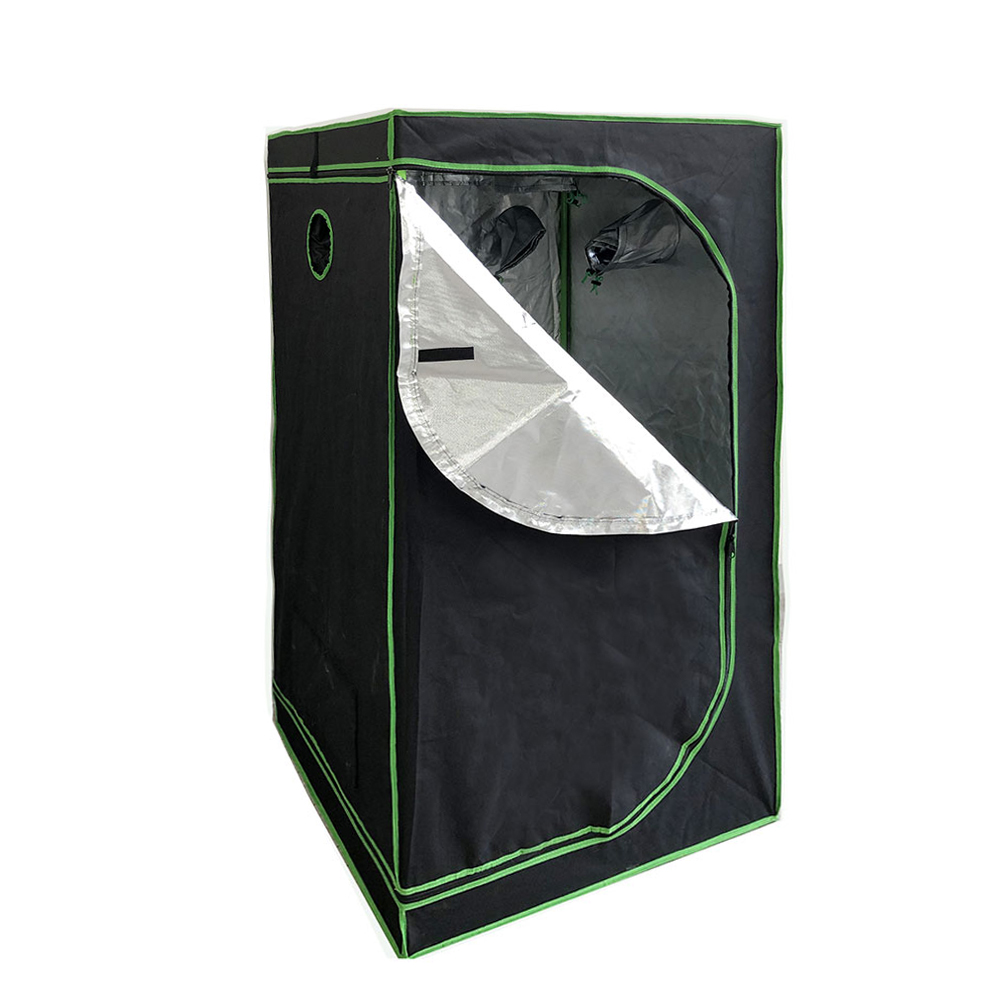
.jpg)
.jpg)
.jpg)
.jpg)
-1.jpg)


